Last updated: October 22, 2025. Informational only – this is not legal or financial advice – Samsung Gauss2 & Perplexity Comet Revenue -Share.
Perplexity’s new Comet browser pairs AI search with agent workflows and, crucially, adds a subscription-driven revenue share for publishers. At the same time, Samsung Gauss2 is pushing more AI reading, translation, and summarization on-device across Galaxy hardware. Put together, this is a new attention + monetization loop: Comet drives discovery and pays for usage; Gauss2 shapes how audiences actually consume your pages.
This ready-to-post guide explains what Comet and Comet Plus are, how payouts work, what to optimize on your site (today), why Gauss2 matters for consumption, and how to track it all without breaking your existing SEO playbook. Let’s deep dive into Samsung Gauss2 & Perplexity Comet!
Table of Contents
TL;DR
- Comet Plus ($5/mo) shares subscription revenue with participating publishers when your content (1) earns human visits in Comet, (2) is cited in AI answers, and (3) powers agent actions (e.g., comparisons, briefings). Pro/Max users get Comet Plus bundled.
- Per reports and briefings, publishers receive 80% of Comet Plus revenue; Perplexity retains 20% for compute. A $42.5M starter pool bootstraps early payouts.
- Publisher interviews indicate checks have already gone out via Perplexity’s earlier program; Comet Plus scales that model with a clear subscription hook.
- Samsung Gauss2 (Compact/Balanced/Supreme) is a multimodal model (text, image, code) designed for on-device first and cloud when needed meaning Galaxy readers will translate, summarize, and clip your articles locally, then jump back to Comet for agent tasks.
- Bottom line: optimize for human clicks, clean citations, and agent-readable structure all three can pay.
What is Comet (and Comet Plus)?
Comet is Perplexity’s AI-powered browser that blends search, browsing, and “agents” (tasks like brief my day, compare plans, draft a summary). The assistant highlights the web, cites sources, and can execute multi-step actions. Instead of fifteen tabs and a spreadsheet, you get a guided result with links you can open, save, or share.
Comet Plus is the $5/month subscription that unlocks premium access and revenue sharing for enrolled publishers. When your work powers visits, citations, or agent actions, you earn a cut of the subscriber pie. It’s usage-based compensation designed for the AI era (and distinct from ad impressions).
Good to know
- Three attribution buckets: human visits, citations in answers, agent actions.
- Split: publishers 80% / Perplexity 20% (compute).
- Onboarding: publishers can apply to join; a roster of early partners from Perplexity’s broader program suggests mainstream newsrooms are already participating.
How The revenue share pays out
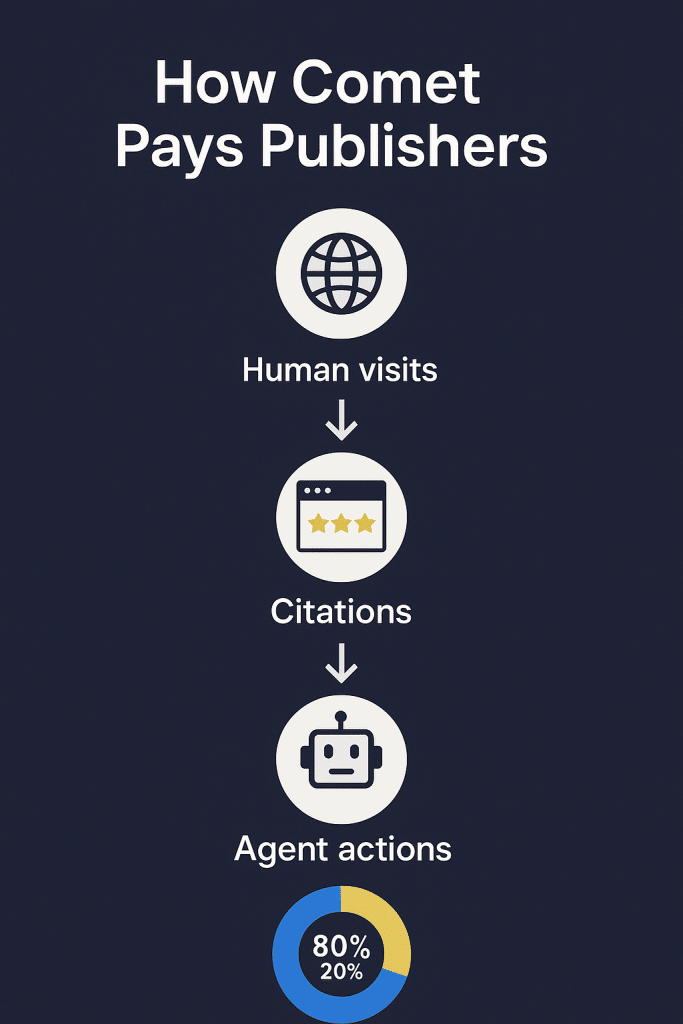
1) The pot
- Perplexity set aside an initial $42.5M pool to seed payouts as Comet Plus spins up.
- Ongoing payouts flow from subscription revenue (Comet Plus; also bundled via Pro/Max tiers).
2) What “counts”
- Human visits: clicks that open your site from Comet.
- Citations: your URL appears in the answer card’s sources.
- Agent actions: your page is used to complete a task (e.g., price comparison, itinerary brief).
3) The weighting
- Exact weights for each bucket are partner-specific and not fully public. Don’t obsess over the formula optimize for all three signals (see the playbook below).
4) Proof of life
- Publisher interviews this fall indicate checks have already gone out under Perplexity’s previous program. Comet Plus formalizes and scales that approach with a clear subscription base.
Takeaway: Treat Comet as distribution + compensation, not a summary layer you can ignore.
Why Gauss2 belongs in the same conversation
Gauss2 is Samsung’s second-gen, multimodal model shipping in three sizes:
- Compact → on-device tasks (faster, private).
- Balanced → general purpose.
- Supreme → heavier cloud generation.
It’s trained across text, image, code and supports 9–14 languages (variant-dependent), with a custom tokenizer and training stabilization to reduce hallucinations. For publishers, that means Galaxy readers increasingly summarize, translate, and save excerpts on the device (no cloud round-trip) and then bounce back to Comet to complete agent tasks. If your page is cleanly structured, you’ll earn citations and agent-action attributions, not just a single click.
Publisher playbook: win the Samsung Gauss2 & Perplexity Comet
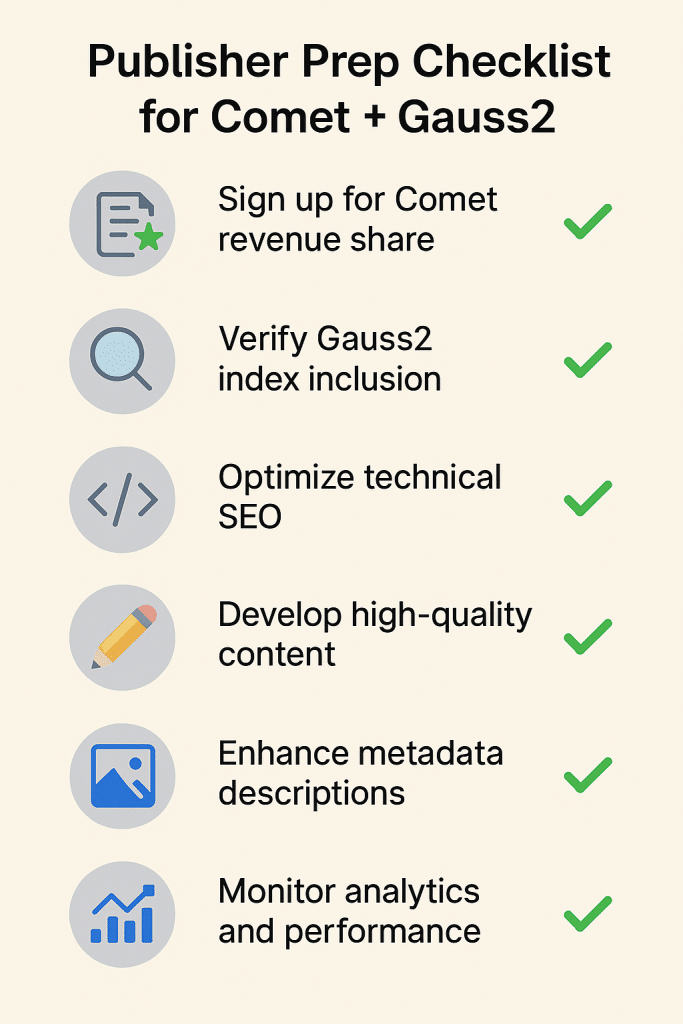
1) Make your pages agent-readable
- Front-load answers: clear headline + 2–3 sentence dek that actually answers the query.
- Tight H2/H3 scaffolding with descriptive anchors (no cutesy labels).
- Use tables, bullets, spec boxes for facts (models, prices, dates, steps).
- Include a short “How it works” block for transactional or program topics (like Comet Plus).
2) Strengthen provenance
- Keep robots.txt and meta directives explicit; if you join Comet Plus, align your crawler/agent rules with the partnership terms.
- Add Content Credentials (C2PA) to hero images/diagrams so copies circulating via on-device tools still carry your signature.
3) Be multilingual-ready
- Publish human-reviewed translations for your top GEOs. Gauss2 users will translate anyway; better they land on your local editions (and your local ads/affiliates).
4) Optimize speed and stability
- Guard Core Web Vitals (LCP, CLS, INP). Agents and humans both bail when pages sputter.
- Ship lightweight diagrams (SVG/AVIF), lazy-load embeds, prefetch related links.
5) Track the new funnel
- Set UTM patterns for /explainer, /guide, /live so you can see which formats monetize in Comet.
- Monitor citations and snippet accuracy. If answers misattribute, tweak headings and move “answer blocks” higher.
6) Join the program Samsung Gauss2 & Perplexity Comet
- Identify which sections to include (evergreen explainers, product guides, election hubs).
- Prepare a pilot pack: 20–50 URLs with clean structure, FAQs, and updated tables.
Measurement & attribution: what you’ll see in analytics of Samsung Gauss2 & Perplexity Comet
- Referrals from Comet: treat like a search engine/referrer. Split by content type to see which formats drive visits vs citations vs agent actions.
- Session quality: Comet readers often arrive primed (they’ve seen a summary). Expect lower pogo-sticking but faster scanning; your above-the-fold needs to deliver.
- Geo patterns: Gauss2’s on-device language support means more non-English readers scanning your English pages. That’s your cue to invest in localized versions.
Risks & realities (don’t skip)
- Legal headwinds: Multiple lawsuits and complaints test how AI search uses content. A revenue share doesn’t remove risk, but it’s the clearest usage-linked model at scale so far.
- Scale question: Your earnings depend on Comet adoption and your performance across the three buckets.
- Ops tax: You’ll spend some cycles cleaning metadata, schema, and internal linking. Consider it table stakes like AMP was, minus the lock-in.
Quick start (this week)
- Pick 12 evergreen pages (or one live hub) → rewrite deks (2–3 sentences that answer the core query), tighten H2s, add a 4–6 item FAQ.
- Instrument: add Comet as a referrer in dashboards; tag your pilot set with UTM codes.
- Apply to Comet Plus and prepare your first pilot pack (20–50 URLs).
- Ship one diagram per page (SVG) and add C2PA to featured images.
- Open your page on a Galaxy phone → translate & summarize locally → ask Perplexity to brief it → confirm your URL appears as a citation.
FAQ Samsung Gauss2 & Perplexity Comet
1) What is Comet Plus, in one line?
A $5/month plan that shares subscription revenue with publishers when their content drives human visits, citations, or agent actions inside Comet.
2) How much do publishers get?
80% of Comet Plus revenue goes to participating publishers; 20% stays with Perplexity for compute. A $42.5M pool bootstraps early payouts.
3) Is this ad money?
No. It’s subscription revenue share. Ads are separate; the Comet Plus model pays for usage tied to subscribers.
4) How are payouts calculated?
By the three attribution buckets above. The exact weighting is partner-specific and not fully public optimize for all three.
5) Who’s eligible?
Perplexity is onboarding partners; publishers can apply. Early partners in its broader program suggest mainstream newsrooms are participating.
6) Where does Samsung Gauss2 fit?
Gauss2 puts translation/summarization on the device (Compact model), so Galaxy readers move faster yet still trigger citations and agent actions that can pay you via Comet.
7) How should we prepare technically?
Tighten H2/H3, add FAQ schema, compress media, use tables for facts, and attach Content Credentials to visual assets. Track Comet referrals with UTMs.
8) What’s the catch?
Scale and clarity. Your revenue hinges on Comet user growth and your content’s machine readability. Some payout details are private; test with a pilot pack.
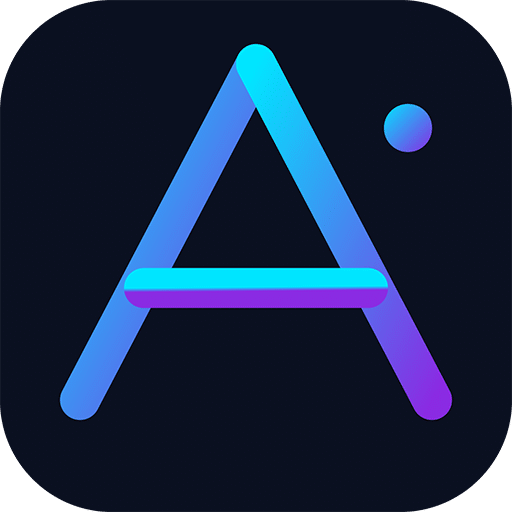
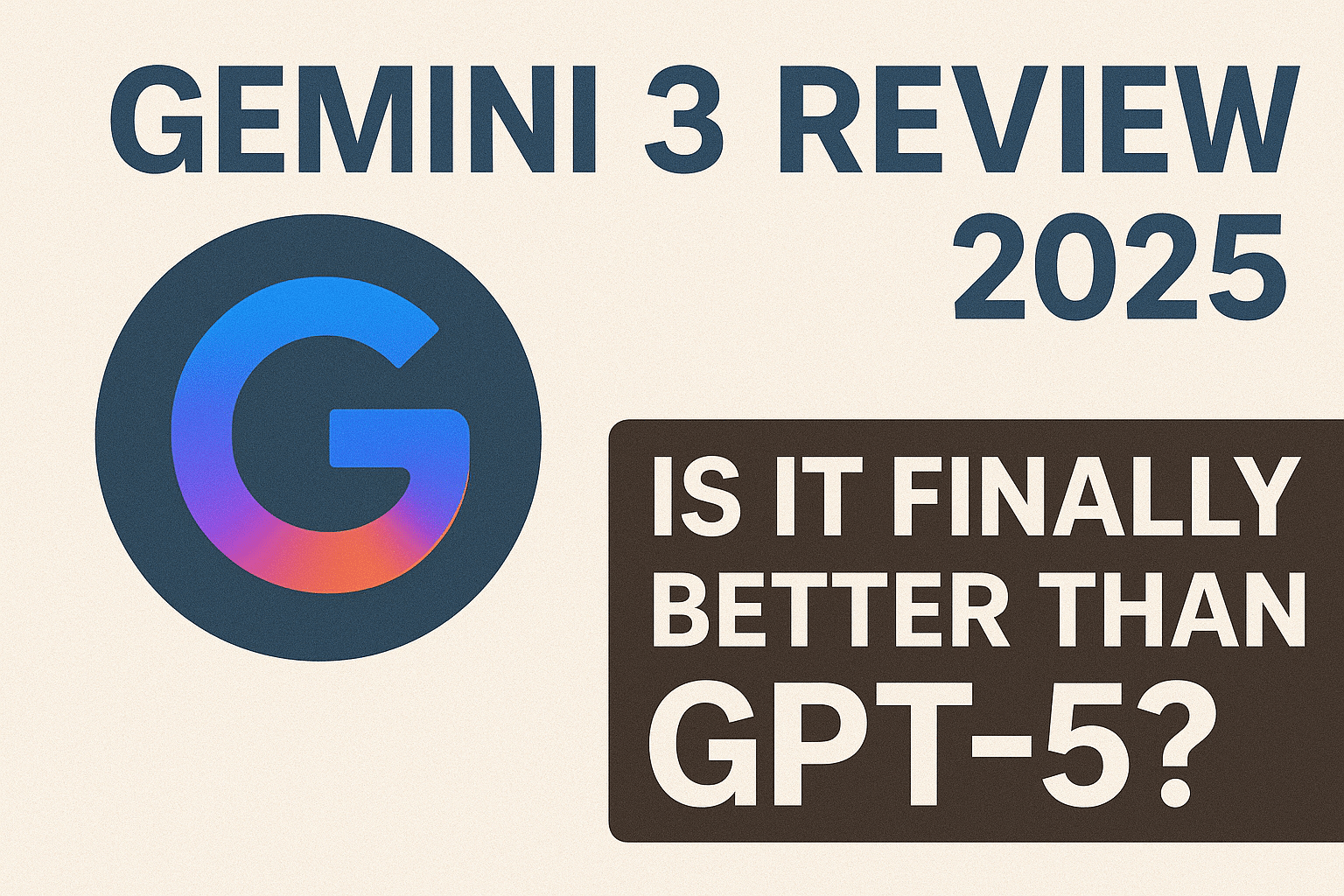
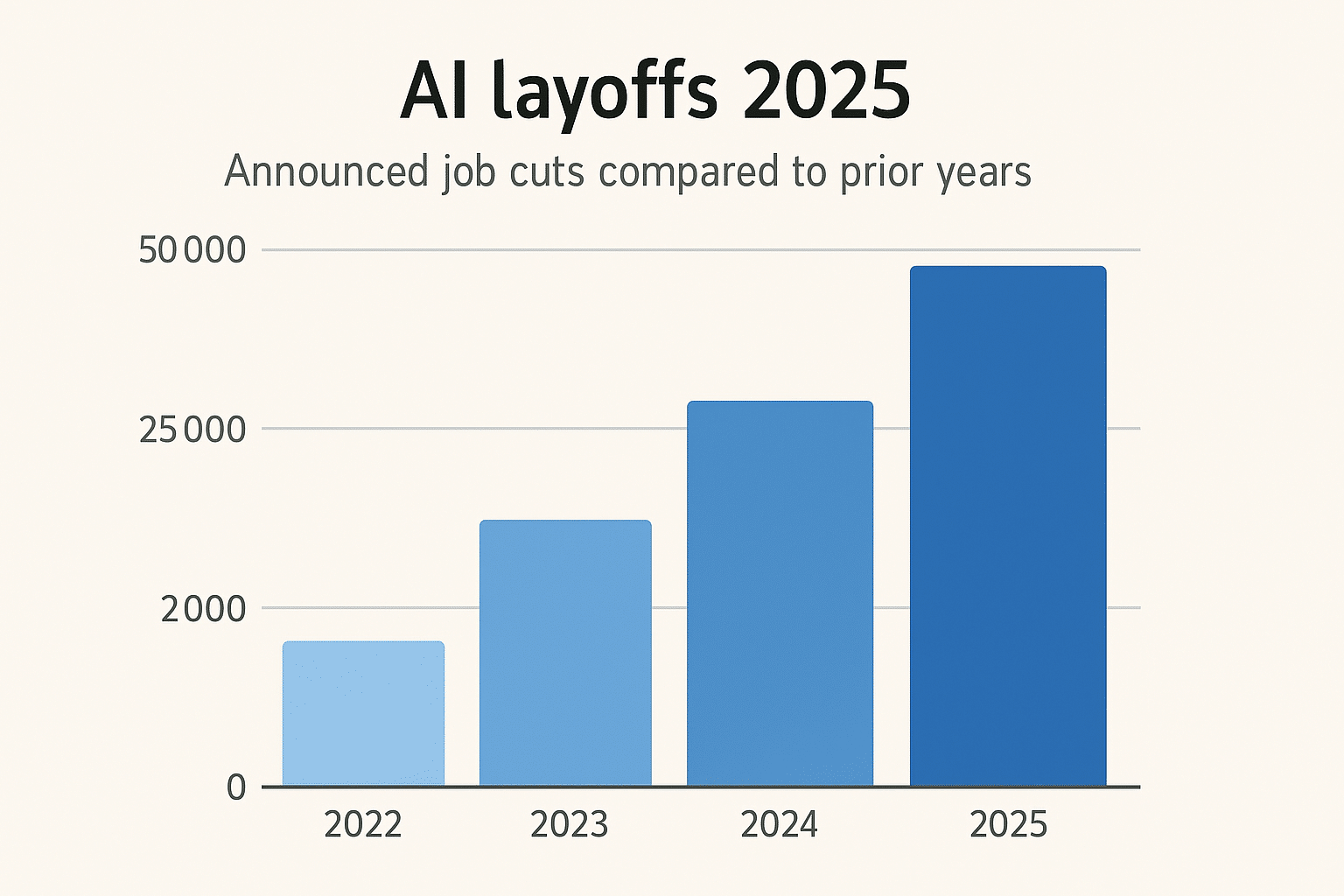






Leave a Reply